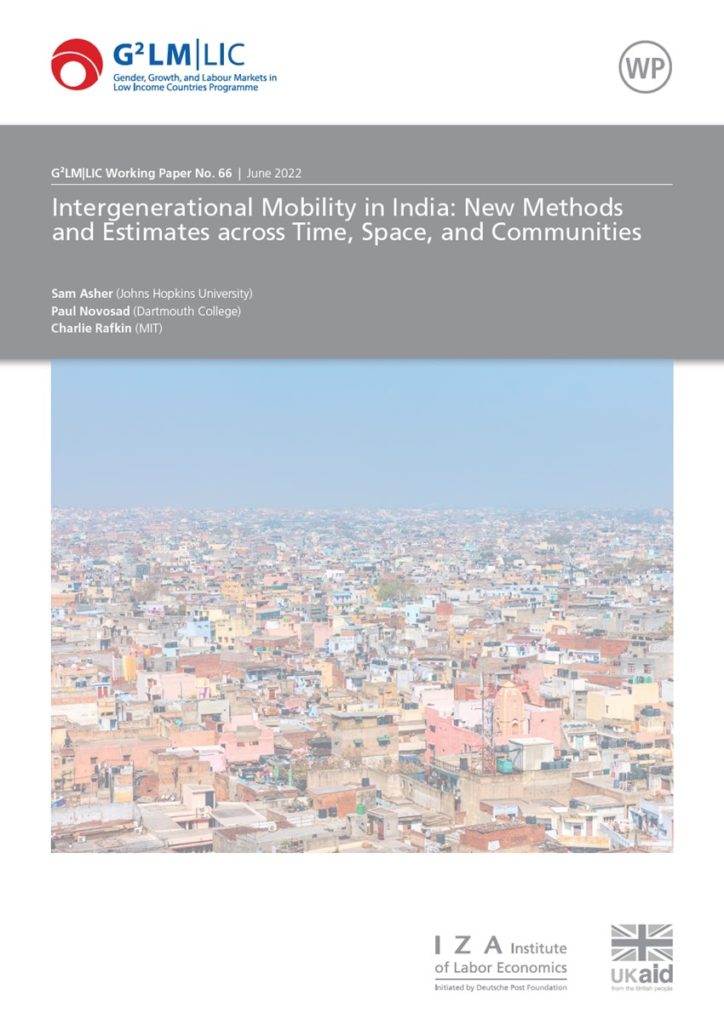
When thinking about the economic development of India in past decades there are two dominating points of view. On the one hand, that economic and political liberalization have increasingly led to a more equal society where intergenerational upward mobility has become more likely, while on the other, that India’s inequalities are persistent as ever. Approaches and methodologies intended to measure the changes and the development of such mobilities have mainly focused on education. Within this however, analyses have been constrained to analyse the relationship between parents’ education and the one of children. While the insights from such research endeavours can tell new and important stories, they are less meaningful when concentrating on subgroup analyses as they only measure progress against members of the same group.
Researchers in this Working Paper therefore set to analyse how intergenerational mobility in India has developed across years and between and within groups. Approaching mobility through education but applying modern methodologies to the analysis that departs from sole linear estimations researchers have three main Findings. First, that upward mobility has remained surprisingly constant, second, that there are significant changes in the cross-group distribution of upward mobility over time, particularly among sons, and thirdly that upward mobility is highest in places that are southern, urban and have high average education levels. Read the detailed Working Paper here.